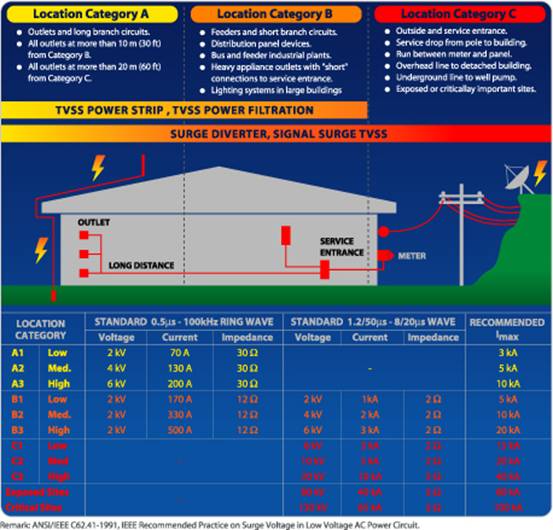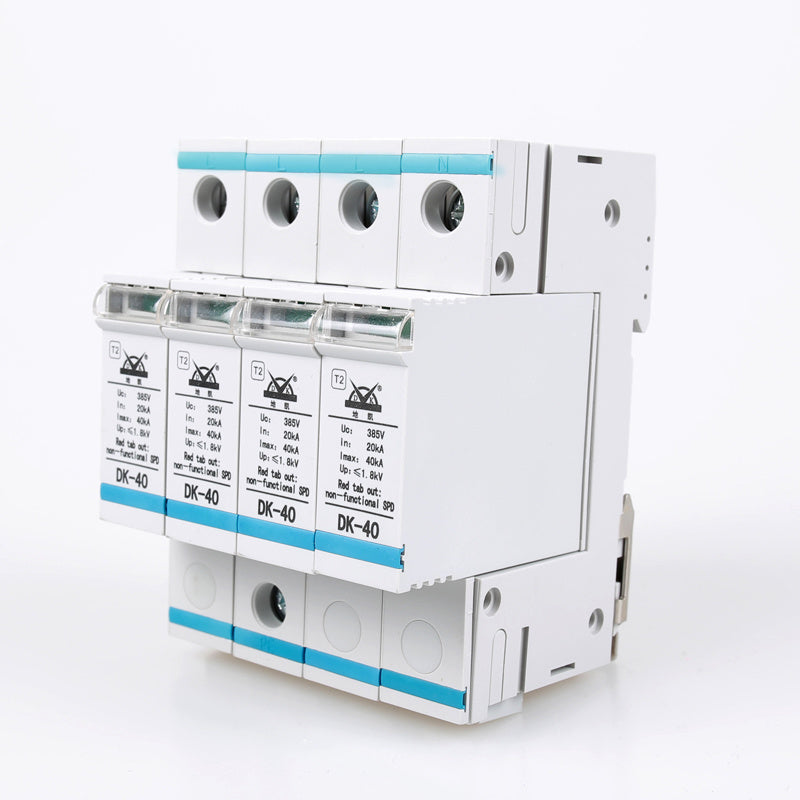| Choosing a Surge Protector | |
|
Surge protector or TVSS (Transient voltage surge suppressor) is the equipment designed to protect your electrical equipments (loads) and AC electrical circuits from power surge or voltage spike. Surge protector diverts the excess voltage and current into grounding wire. Your electrical equipments can be exposed to damaging surges from AC power line and telephone or signal lines. Surge protector helps to protect equipments from lightning surges, switching surges and voltage spikes. Many factors influence the selection of the right surge protector as follows: Surge protector location ANSI/IEEE C62.41-1991 standards provide the location categories for the correct selection of surge protector. It defines three categories of surge level, based on strategic location within a facilities wiring network, where power problem may be encountered.
Category B
Category C
These three categories; A, B and C, determine that what level of surge protection each location need as shown in the figure below.
Clamping voltage Clamping voltage is the voltage at which a surge begins to work by conducting electricity to the ground line. A lower clamping voltage indicates better protection, but a shorter life expectancy. Clamping voltage is also often called �Let-through voltage�, but the two are not actually the same thing. The let-through voltage is the voltage that is allowed to pass on to your equipments by the surge protector. Energy absorption/dissipation (Joule rating) Joule rating indicates the amount of energy that surge protector can absorb without failure. A higher joule rating indicates the better protection because surge protector will divert more energy elsewhere and absorb less energy resulting in a lower voltage spike. Response time This rating indicates how fast a surge protector can react. The longer response time tells you that the connected equipments will be exposed to surge for a greater amount of time. Choose a surge protector that responds in nanosecond. Indicator lights Surge protector with indicator lights let you know the surge protector is functioning properly whether or not. Surge protector connectivity Choosing a surge protector depends on what sort of equipment you are connecting to power supply. Some surge protectors can protect your equipments from surge damage on wall outlets connection and from telephone or signal lines connection, too. Some surge protectors can protect only surge damage on signal lines connection.
Proper grounding imperative Without proper grounding, surge protector�s ability to protect against power surge will be diminished. |
Seguir leiendo

Subscribe to our newsletter
Promotions, new products and sales. Directly to your inbox.



